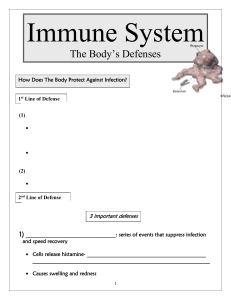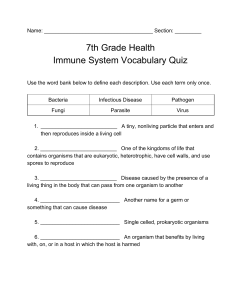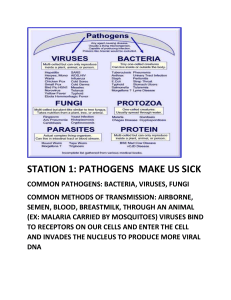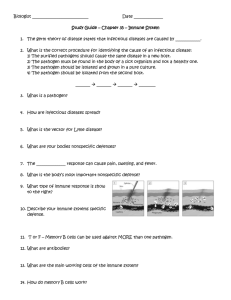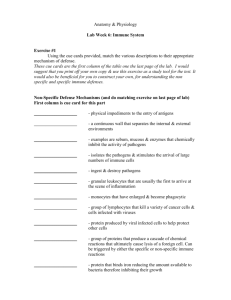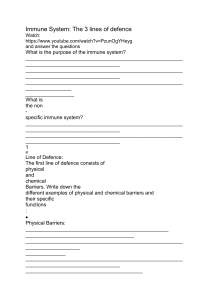Chapter 40: The Immune System and Disease 40-1 Infectious Disease
advertisement
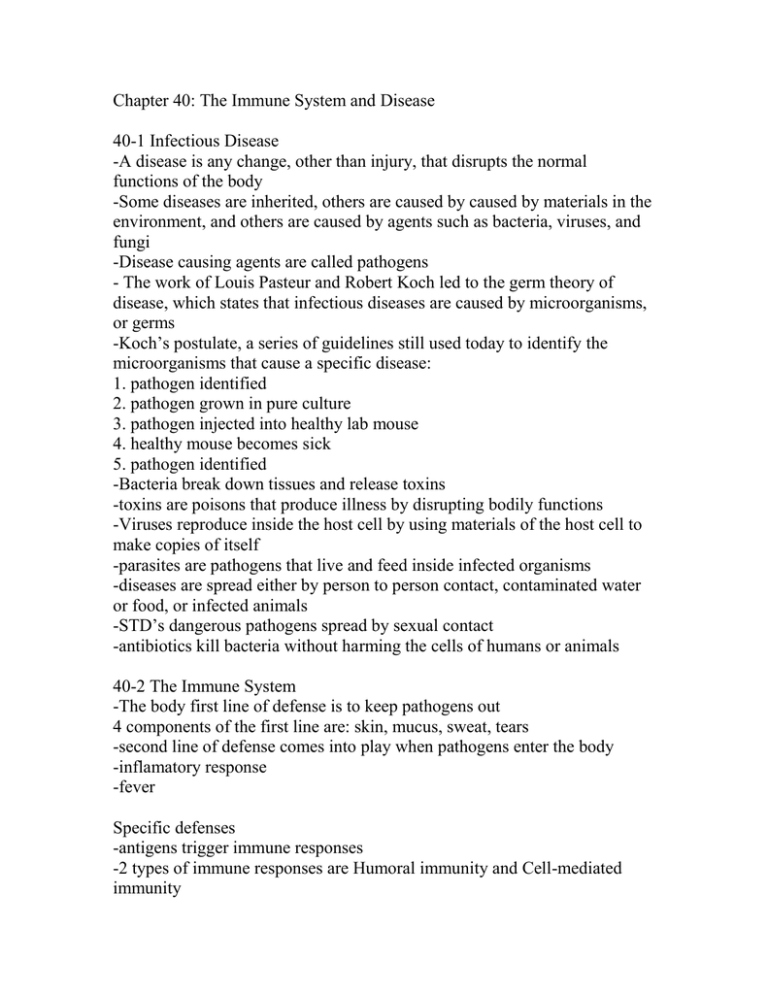
Chapter 40: The Immune System and Disease 40-1 Infectious Disease -A disease is any change, other than injury, that disrupts the normal functions of the body -Some diseases are inherited, others are caused by caused by materials in the environment, and others are caused by agents such as bacteria, viruses, and fungi -Disease causing agents are called pathogens - The work of Louis Pasteur and Robert Koch led to the germ theory of disease, which states that infectious diseases are caused by microorganisms, or germs -Koch’s postulate, a series of guidelines still used today to identify the microorganisms that cause a specific disease: 1. pathogen identified 2. pathogen grown in pure culture 3. pathogen injected into healthy lab mouse 4. healthy mouse becomes sick 5. pathogen identified -Bacteria break down tissues and release toxins -toxins are poisons that produce illness by disrupting bodily functions -Viruses reproduce inside the host cell by using materials of the host cell to make copies of itself -parasites are pathogens that live and feed inside infected organisms -diseases are spread either by person to person contact, contaminated water or food, or infected animals -STD’s dangerous pathogens spread by sexual contact -antibiotics kill bacteria without harming the cells of humans or animals 40-2 The Immune System -The body first line of defense is to keep pathogens out 4 components of the first line are: skin, mucus, sweat, tears -second line of defense comes into play when pathogens enter the body -inflamatory response -fever Specific defenses -antigens trigger immune responses -2 types of immune responses are Humoral immunity and Cell-mediated immunity -proteins that help destroy pathogens are called antibodies -B cells produce antibodies and T cells assist plasma cells -vaccinations are injections of weakened or mild forms of a pathogen to produce immunity, they stimulate the immune system to create millions of plasma cells ready to produce specific types of antibodies should you ever be exposed to the pathogen -active and passive immunity 40-3 Immune System Disorders -allergies result when antigens from allergens bind to mast cells -histamines increase the flow of blood and fluids to the surrounding area -if you have allergies you may take antihistamines, they are drugs used to counteract the sneezing, runny eyes and nose, and other irritations -Asthma can also be triggered by certain antigens -when the immune system makes a mistake and attacks the body’s own cells, it produces autoimmune disease such as juvenile-onset diabetes, myasthenia gravis, multiple sclerosis, and rheumatic fever -AIDS - Acquired Immune Deficiency Syndrome -spread by a virus -helper T cells are attacked by HIV -HIV is spread by sharing intravenous needles and by contact with infected blood or other bodily fluids 40-4 Cancer -Cancer begins when something goes wrong with the controls that normally regulate cell growth and division -A mass of growing tissue is known as a tumor - Benign tumors do not spread to surrounding healthy tissue or to other parts of the body -Malignant tumors can invade and destroy surrounding healthy tissue or spread to other parts of the body -the spread of cancerous tumors beyond their original site is called metastasis -Carcinogens are chemical compounds that are known to cause cancer - some treatments for cancer include surgery, radiation therapy, and drug therapy (chemotherapy)

